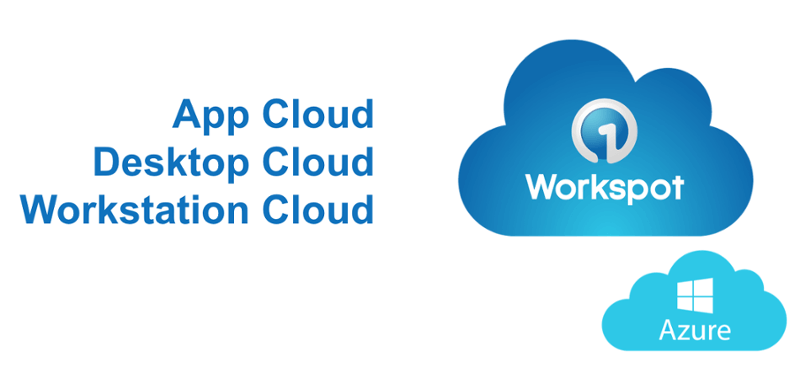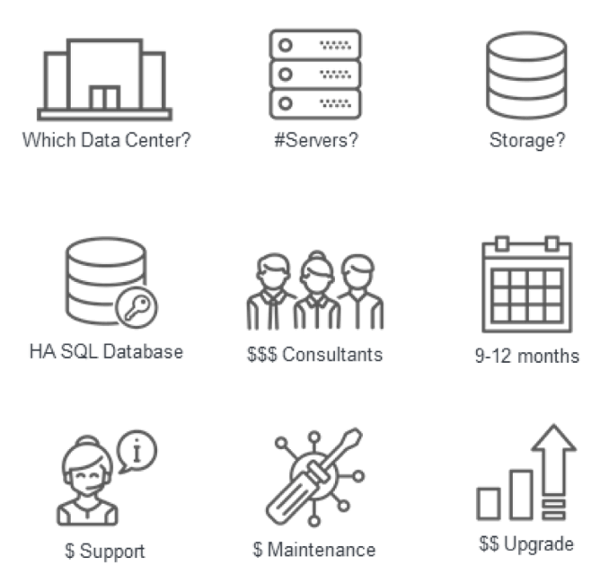Better double check; you may have forgotten the “D” in your VDI. Of course, you realize that VDI stands for Virtual Desktop Infrastructure. But when was the last time you focused on the “Desktop?” You may have lost sight of the “D” because you’ve been thinking about “Infrastructure” way too much. We can’t blame you, but we do blame outdated technology. At this point, the “I” is just getting in your way, and at Workspot, we think it’s time to get your “D” back. In this blog series I’ll show you how.
What Happened to the “D”?
IT teams have been buying desktops for more than 25 years. When they do, they focus on how much CPU, memory, and storage comes with each desktop. Why should a virtual desktop project be any different? IT should spend their time thinking about the same desktop attributes. But they don’t! Actually, they can’t! They spend most of their time talking about and grappling with “infrastructure:” Servers, storage, layers, management tools, and much more. Managing all this infrastructure is exhausting and expensive, and when the focus is on the “I” and not on the “D”, users end up really unhappy and IT people end up really frustrated. How did this happen?
The crux of the problem for the last 7-10 years has been the following. IT spends about $1500 per desktop (or laptop). That cost is amortized over 3-4 years, depending on the organization. But the overhead of dealing with physical desktops – all the maintenance costs – is often unsustainable, and once the world went mobile, tethering people to a desktop was a sure way to give your more agile competitors an advantage. In response, some IT teams made the decision to deploy virtual desktops and apps. The promise of greater IT efficiency, information security, and a productive mobile workforce was certainly attractive. But in order to implement VDI on-premises, IT needs to translate the desktop attributes into expensive and complex data center technologies. If I have a 1000 users, how many servers do I need? How much shared SAN/NAS storage do I need? In which data centers do I put all this infrastructure?
What’s So Great About “I” Anyway?
To determine the number of servers needed, IT needs to assess the nature of desktop usage in their organization. Which applications are used? What is the CPU and memory utilization rate? How many users can I fit onto a certain class of servers? Do I need 20 servers or 30 servers or 50 servers for 1000 users? It all depends on utilization.
The storage question has been even more challenging. Local storage on PCs is the cheapest storage available – about $100/TB. SAN/NAS can be 25-100 times that cost. If each user had 1TB of storage on their desktop, then you would need 1000 TB of SAN/NAS. That is massively expensive. So in the early days, VDI vendors came up with various ways to optimize storage. Oh, you can do it with a single image, so you don’t need to have 1000 copies of Windows OS. Now, let’s put in layers so you don’t need to have 1000 copies of each application. Wait, what about profile management tools to store end user personalization? You need that too. Oh, and you can no longer manage it with your existing PC management tools like SCCM and Altiris. So your VDI infrastructure is a stand-alone management framework. All of this may sound fine on paper, but Windows wasn’t architected to operate in this manner, so customers struggle with app compatibility, corrupted profiles, and application updates that blow away desktops. At the same time, the storage vendors started implementing de-duplication, so that the 1000 copies of Windows and the applications in each user’s desktop were automatically de-duped at the storage layer. De-duplication was ultimately adopted by hyper-converged infrastructure (HCI) vendors like Nutanix and Simplivity, and even though HCI really began to impact the cost of VDI implementations it hasn’t gone far enough.
You haven’t worried at all about where all this infrastructure is going to live yet, and you need to add that to your worries for sure. Which data center should it be in? How far away will all my end users be from that data center? What does that mean for latency? What will their user experience be like? How much bandwidth will they require? Do you really want to deal with this?
Give me a “D”! A Desktop Cloud, That Is…
Until now all we’ve talked about is data center infrastructure and all the tortured maneuvers you’ve been forced to endure over the last decade to be able to deliver a mission-critical workload to a class of users. None of this serves customers well, and that’s why we started Workspot in the first place. From the conversations we’ve been having with customers over the past year or so, it’s very clear that the days of IT teams being slaves to complex on-prem data centers are coming to an end. IT people have way more value to add than keeping the lights on in a datacenter and babysitting VDI. Bottom line? You have more important things to do and more value to add than dealing with all this complexity. The emergence of the cloud allows us to bring the focus back to desktops. The data center is any region of the public cloud you select. No worries! Essentially the infrastructure becomes invisible in that region – you don’t have to worry about it anymore! Place desktops and apps close to your users so they have a great experience. That’s the way it should be.

At Workspot, our focus is squarely on the virtual “desktop” When you’re ready to get started, the discussion we’re going to have will go something like this: How much CPU do you need? How much memory? Want to use your existing management tools? Sound familiar?
Workspot Desktop Cloud and Amazon WorkSpaces are the only vendors that have brought back the “D” in VDI! That means you can focus on what class of desktop your users need, and let us worry about the most efficient and simplest way of delivering it. Watch for my blog next week; I’ll dive into the details of what it looks like to buy a Windows 10 cloud desktop. Spoiler alert: Workspot can deploy your virtual desktops, apps, and workstations on Microsoft Azure in a day! Schedule a demo and let us “wow” you with that!
Compare Virtual Desktop Solutions Blog






